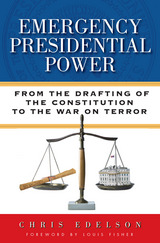
Drafting a Conservation Blueprint lays out for the first time in book form a step-by-step planning process for conserving the biological diversity of entire regions. In an engaging and accessible style, the author explains how to develop a regional conservation plan and offers experience-based guidance that brings together relevant information from the fields of ecology, conservation biology, planning, and policy. Individual chapters outline and discuss the main steps of the planning process, including:
• selecting conservation targets and setting goals
• assessing existing conservation areas and filling information gaps
• assessing population viability and ecological integrity
• selecting and designing a portfolio of conservation areas
• assessing threats and setting priorities
A concluding section offers advice on turning conservation plans into action, along with specific examples from around the world.
The book brings together a wide range of information about conservation planning that is grounded in both a strong scientific foundation and in the realities of implementation.

Winner, Crader Family Book Prize in American Values, Department of History and Crader Family Endowment for American Values, Southeast Missouri State University

How do you start a piece of writing? How do you edit one? And what can be done to combat those pesky—and paralyzing—feelings of perfectionism that often derail our most important sentences and paragraphs?
This sixth volume of the Syntax of Sports series creatively uses the language of baseball, football, tennis, and many other sports to explore these questions. Based on a popular course at the University of Michigan, it captures the energy, originality, and discipline - crossing insights that make its author, Professor Patrick Barry, such a sought-after teacher and presenter.
READERS
Browse our collection.
PUBLISHERS
See BiblioVault's publisher services.
STUDENT SERVICES
Files for college accessibility offices.
UChicago Accessibility Resources
home | accessibility | search | about | contact us
BiblioVault ® 2001 - 2024
The University of Chicago Press









